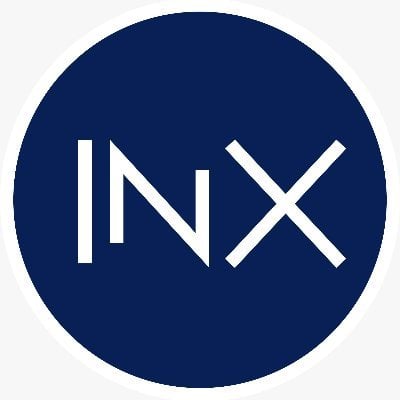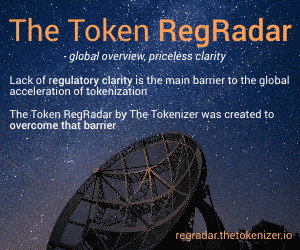Why Real World Asset Tokenization Is Captivating Both DeFi And TradFi
In the realm of finance, rare are the moments that beckon a seismic shift—a confluence of innovation and opportunity that promises to redefine the landscape. The tokenization of real-world assets (RWA) stands at this crossroads, heralding a transformative era for both decentralized finance (DeFi) and traditional finance (TradFi). As w witness this pivotal juncture, akin to the dawn of the internet or the inception of the stock market, it’s imperative to explore why and how this groundbreaking concept is captivating minds and markets alike, charting a new course toward financial freedom and empowerment.
By Itai Avneri, Deputy CEO & COO, INX

Unveiling the Need For Tokenization: The TradFi and DeFi Dichotomy
Traditional fiance (TradFi) and decentralized finace (DeFi) represent two contrasting yet interwoven threads. TradFi, with its storied institutions and established practices, has long been the backbone of our economic system. Yet, it’s not without its challenges. Fragmented financialinfrastructure, protracted settlement times, and the absence of round-the-clock trading are notable hindrances. These inefficiencie create bottlenecks in liquidity and accessibility, impeding the seamless flowof capital and stiflinginnovation.
Conversely, DeFi emerges as a bold counterpoint, unfettered by the constraints of traditional systems. Its hallmark is the 24/7 trading environment, offring unparalleled accessibility and fluiditythat TradFi struggles to match. DeFi’s agile infrastructure, underpinned by blockchain technology, enables rapid settlements and a degree of transparency that traditional systems can only aspire to. However, this modern financial frontier faces its own set of challenges, chiefly the lack of substantial collateral types. The reliance on volatile cryptocurrencies and synthetic assets as collateral limits DeFi’s appeal to a broader audience and curtails its potential for mainstream adoption.
Tokenization emerges as the harmonizing force in this dichotomy, a bridge melding the strengths of TradFi and DeFi while mitigating their respective weaknesses. By tokenizing real-world assets—transforming tangible assets like real estate, art, or commodities into digital tokens—TradFi’s valuable, stable assets become easily accessible and divisible, imbued with the agility of DeFi’s ecosystem. Meanwhile, DeFi can finallyaccess a pool of collateral that is backed by real-world value, not just synthetic tokens
Tokenization: Bridging Worlds, Unlocking Potential
With hundreds of trillions of dollars worth of real-world assets waiting to come on chain, it’s no wonder that the tokenized asset market is projected to grow to a staggering $10.9 trillion by 2030. This projection isn’t merely indicative of growth. It signals a fundamental transformation in how we perceive and manage assets. Sectors like real estate, debt, private credit and stocks lead this charge.
Yet, despite the vast potential of the tokenized asset market, it remains largely untapped, with only about 0.03% of the total market size currently exploited. This low level of market penetration represents a golden opportunity, a chance to be at the vanguard of a sector on the cusp of transformative growth. The tokenization of RWAs offers a unique proposition: to partake in shaping an industry and to be a pioneer in a space where the rules are yet to be written.
As tokenization reshapes the contours of our financial systems, it beckons a transformative era where the convergence of TradFi’s heritage and DeFi’s innovation heralds a new dawn of fiscal democracy and opportunity, redefining our relationship with assets and wealth.

Towards A Multi-Asset Future
The institutional embrace of digital assets is not just a trend; it’s a paradigm shift, with Bitcoin ETFs catapulting Bitcoin to unprecedented heights. Yet, the real linchpin in bridging the established world of TradFi and the burgeoning realm of Web3 is the tokenization of real-world assets (RWAs). This leap forward isn’t without its hurdles, such as a fragmented regulatory landscape and challenges in market making and liquidity.
But the brightest minds in both TradFi and DeFi are collaboratively navigating these complexities. When we at INX set out to do the first SEC-registered blockchain IPO, we envisioned exactly this sort of cross-pollination of financial ideals.
Looking ahead, we foresee a diversified financial ecosystem where tokenized RWAs, cryptocurrencies, stablecoins, and central bank digital currencies (CBDCs) coalesce. Thanks to the convergence of DeFi and TradFi, crypto investors can invest in real-world assets, diversify their portfolios, and earn yield from high-quality instruments without leaving the blockchain. Meanwhile, traditional financial institutions can swap out their outdated infrastructure for fast, efficient peer-to-peer systems.
Above all else, the tokenization of real-world assets is opening the door to a new class of financial instruments that were previously unimaginable. Imagine getting a loan to finance your house by staking your tokenized Tesla shares. Or using a tokenized version of your home as collateral to mint stablecoins. The scope of possibilities is endless, and those of us privileged enough to be around now will get a chance to shape the financial world of the future.
Read other stories: Tokenize.it Revolutionises Corporate Financing Landscape with Launch of Crowdinvesting Product
You Might also Like















